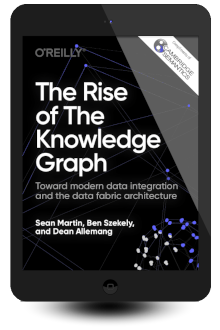We recently came across an article by Transforming Data with Intelligence (TDWI) that really surprised us. Sentence by sentence, paragraph by paragraph, our head nods seemed to be dipping into agreement more and more deeply. In this blog we’d like to provide further emphasis our perspective on the points in Agility, Speed, and Trust: Driving Business Data Strategies in 2022.
As much as we all might be tired of reading about the COVID pandemic and the ongoing uncertainties that came with it, we do have to pay attention to the facts. We are currently in the middle of population health challenges that influenced the working world in unforeseen ways. However, despite business uncertainties, good data and analytics remain important (if not increased in importance) for driving smarter business strategies and decisions.
TDWI named agility, speed, and trust as three integral objectives when thinking about the future of organizational data initiatives. TDWI defines these three objectives as such:
Section pulled from TDWI article:
"Agility means having the ability to sense change, adjust behavior, and take advantage of unexpected opportunities."
"Speed means quickness and eliminating delays or unnecessary steps, but also maintaining balance and direction."
"Trust is essential to internal and external collaboration and culture, customer relationships, and support for ethical and legal behavior regarding sensitive information."
What screams off the page as we read these three objectives was how organizations are being asked to embrace change and uncertainty as the new normal, and this is exactly the world for which knowledge graphs were designed.
 Jumping into the first trend: Agility.
Jumping into the first trend: Agility.
Per TDWI, “Underpinning business agility today is data agility.” Graph databases are designed for flexible and evolving models. Our flavor of graph database, AnzoGraph, is specially designed as an OLAP database that lends itself to complicated data discovery, access and analysis at scale that cannot be otherwise achieved by other databases.
When further looking at agility through the lens of AI-augmentation, TDWI mentions the need for embedded functionality within data-driven applications. We 100% agree. That’s why our knowledge graph platform supports graph embeddings (that are based on open standards) for seamless integration that leads to rich data transformation and validation performance.
Section pulled from TDWI article:
"Knowledge graphs, ontologies, and graph databases for understanding data relationships. To search for and analyze complex data relationships effectively, organizations need models and systems that can store data relationships and make them discoverable. Knowledge graphs, network-based representations, and graph databases specialize in these capabilities. Knowledge graphs, which are built using graph databases and ontologies, capture how different data sets relate to each other and to higher-level entities such as people, places, and things. Graph databases and query languages can manage and retrieve complex data relationships without having to fit them into relational table structures.
In 2022, we will see advances in ease of use and self-service visualization capabilities for knowledge graphs and semantic data integration. Graph databases will also prove useful in data catalogs and semantic layers for capturing deeper information about data relationships for user exploration, data pipeline development, and governance."
We couldn’t have said it better ourselves. The above section summarizes what Cambridge Semantics built over the last decade. When looking forward at TDWI’s advancements for ease of use and self-service visualization, our graph-first approach means that a knowledge graph can be created and interconnected completely automatically. All that's needed are your data source connection and directory information and Anzo (our knowledge graph platform) will get you up and running without having to write a single line of code.
This leads us to the next TDWI trend: Speed.
We already spoke about automating data collection and connectivity, which would otherwise be extremely difficult and slow to do manually. A recent advancement for Anzo is the addition of functionality to greatly improve onboarding of relational and semi-structured data sources that makes those transforms into graph (RDF) a breeze. Anzo has taken the knowledge graph data on-boarding journey from a jaunt to a sprint.
TDWI considers data silos, which are fragmented data by nature, to be large contributors to latency. This problem has an excellent solution: knowledge graph. Day in and day out, we help customers implement knowledge graphs to stitch together different siloed data sources creating the architectures referred to today as data fabrics or data meshes. Here’s what TDWI has to say about data fabrics and data meshes.
Section pulled from TDWI article:
"In 2021, data fabrics and data mesh architectures became hot topics; this will continue in 2022. Data fabrics and data mesh architectures deserve evaluation for establishing connected networks of information that unify environments and make it seamless to view, access, and manage all data. Organizations should consider data fabrics and data mesh architectures for improving response in dynamic situations where they need to perform analytics right away on data in multiple sources.
Data fabrics and data mesh architectures typically depend on data catalogs full of integrated metadata and semantic data knowledge. Knowledge graphs can play an important role for visualizing data relationships across fabrics and meshes. Supporting a data fabric, data virtualization can apply metadata and integration logic to consolidate querying, governance, and user access control in a single layer."
Here we are at TDWI’s third trend: Trust
Data security, governance and quality, are the pillars of data trust. Cambridge Semantics has always treated these pillars with utmost importance in order to build the trust needed for production deployments across complex industries and use cases. Our customers include some of the largest organizations within Life Sciences, Financial Services, Manufacturing, and Government, where data trust is not just a “nice to have” but table stakes requirements. Anzo utilizes role-based permissions throughout the platform at both the metadata and instance data level. Anzo’s open standards, means that organizations can utilize their existing LDAP configurations and group management schemes to drive who is configuring and also accessing the data that is integrated into knowledge graphs.
When it comes to data quality, we have invested significant effort to add comprehensive profiling options to identify and resolve data quality issues with any data contributing to a knowledge graph. Other platform capabilities automatically resolve discrepancies and highlight data governance vulnerabilities to proactively facilitate resolution and which in turn builds the trust required to share data through packaged graph datasets or business dashboards designed for high volume consumption. Further, because knowledge graph solutions allow users to answer questions of data from many sources, verification and validation becomes more important.
Section pulled from TDWI article:
Organizations surveyed by TDWI continue to see data quality as one of their biggest challenges -- and not surprisingly, a key focus of improvement through adoption of modern technologies and practices. Along with data governance, data quality is a pillar of data trust, which is about instilling confidence in shared data for each use case. Increasingly, data trust involves adhering to laws and regulations covering data security, privacy, and confidentiality. Thus, data trust requirements need to be top of mind for data governance boards and chief data officers.
Along with an inventory of metadata about data assets, data catalogs can contain governance and security rules that drive constraints in data pipelines and applications. Modern data pipeline solutions enable developers to incorporate governance, user authentication, and security rules and constraints.
Tying it all together
With agility, speed, and trust driving your enterprise data strategies, knowledge graph seems to be a great fit. As your organization is considering how best to navigate the data design and architecture ecosystem feel free to lean on us for support in helping to best plan your strategies.


